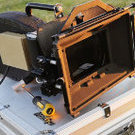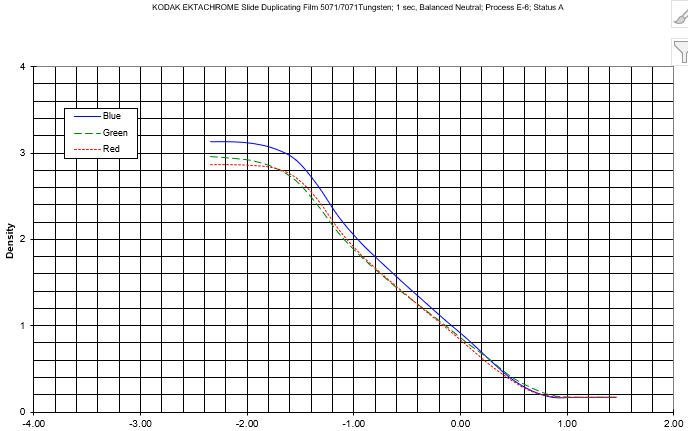
Frederick Knauf
Basic Member-
Posts
11 -
Joined
-
Last visited
Profile Information
-
Occupation
Industry Rep
-
Location
Rochester
Recent Profile Visitors
491 profile views
-
Two 100 ft. units of Kodak VISION3 500T, 7219, were returned to Kodak in Rochester by UPS in mid-March. Apparently, these became unhinged with their shipping information and UPS returned them to us hoping that we could assist in finding their rightful owner. We reached out through the Kodak Labs and our group of Sales Representatives but have not heard of any student or productions that were reporting film that was lost. Since that time, our Rochester manufacturing processing lab has processed the two rolls and we have confirmed that both do contain images, but that there are no slates on the rolls which would assist in tieing to a production / user. We would like to have these returned if their use is needed for this semester or any other work. Based on the emulsion, this film was lost in UPS sometime in February or early March. If you lost any film through UPS, please reply or send me a message here. If you know of another student or cinematographer who lost their film, please have them contact EIAMERICAS@Kodak.com and we can work to return the film to its rightful owner. Thank you Frederick Knauf, Eastman Kodak Co.
-
Stephen Perera started following Frederick Knauf
-
The newest CT type carry-on X-ray machines were tested and found to be far worse than the earlier carry-on machines. The newer ones are being implemented because they allow passengers to keep laptops and other electronic devices inside their bags, rather than pull them out and place in a separate tray. These use computed topology (CT) scanning which may be less energy than the older x-ray "blast", but they remain on as they encircle the item providing a continuous stream of energy to the item. In the case of film, the silver halide grains absorb the energy from the stream for a longer time resulting in more energy accumulating. The high-energy stream of the x-ray acts like a bowling-ball onto pins, throwing electrons from one grain onto others around it, which results in both an increase in base density (D-min) and the appearance of larger grain. Tests which we conducted with the TSA at the Rochester International Airport indicated that no camera negative is safe from seeing a difference from these new, "improved", scanning devices, with the 50D gaining density in its D-min to a just noticeable level. Higher speed films such as the VISION3 250D and VISION3 500T were ruined in one-pass through the new scanner. Those who promoted these scanners claimed that they were safer for film because the energy stream was indeed lower, but they failed to recognize the continual stream and absorption film acquires vs. the old single shot of x-ray, which was safe for 400-speed and below. We recommended to the TSA to initiate hand inspection for all film materials. All film should be easily inspected, and the passenger should provide a changing bag and contact the airport ahead of time to have them prepared for the inspection. No film should ever be loaded into a camera (motion picture or still) so that the camera can be inspected / scanned properly. Frederick Knauf, Quality Manager, Eastman Kodak Co.
-
Eastman Cine-Positive Tinted stocks began being offered close to 1920 and by 1920 all seventeen variations of color were being produced and sold. These stocks came tinted from the Kodak factory and the elements of tint change in a movie occurred at scene changes where the nitrate base could be spliced using similar techniques to how formal negatives were being cut and spliced to composite the movie. What a task to manufacture those wonderful tinted movies! My records only indicate that these were sold in 35mm. 16mm was still considered a home movie format back then, but they could have been sold by Kodak but not from the Motion Picture business of Kodak. My records focus on Motion Picture code histories. By the end of the 1920's, only seven of the seventeen were still in existence when they were renamed Eastman Sonochrome Positive (same emulsion as code 1301) and Eastman Sonochrome Fine Grain Positive film (same emulsion as code 1302), the new name given during the conversion of sound film "talkies" and to show that the films would work well with sound striping and reading in theaters. Four of the seven colors (a yellow-orange, a yellow, a blue-violet, and a red-magenta) were made on a cellulose diacetate base, and these were also tinted in the base manufacturing factory at Kodak not in dying of the processed film or during processing. Fred Knauf Eastman Kodak Co.
-
Yes, Charles, there were other means of slide duplication involving the use of internegatives and then printing onto Eastman Color Print film. Slide strips, sold at stores in places like Niagara Falls, Yellowstone, and the Grand Canyon, would use that method. Kodachrome Duplicating films were also around in 1940 (code 5265) through to 1966 (code 5269) but then duplication for the stills reversal market went to the Ektachrome Duplicating and the 16mm duplicating went to Eastman Reversal Color Print film through to 1981 when that was discontinued due to low sales. This is all from information from the Professional Films Product Staff passed on to me in the 2010 time-frame when that group was dissolved.
-
Kodak manufactured and sold a product called Kodak Ektachrome Slide Duplicating Film, code 5071 f,or the purpose of making duplicates. Prior to personal computers and projectors and now large screens tied to a computer, trade shows utilized many sets of slide duplicates for presentations, as well as those who wanted to project presentations while protecting their originals. The film processed in standard E-6 chemistry. The film featured very clear D-min and very straight curves. Here is the curve shape attached. Motion Picture Color Intermediate Film, code 5242 or 2242, is similar in its flat 1.0 gamma, but the is the issue with the secondary development not necessarily achieving the required reversal faithfully and the inherent base density / masking density.
-
2242 is designed to have a contrast of 1.0 in all three color records when processed in ECN-2 chemistry. The film's low grain, high sharpness and consistent contrast allow for printing of multiple IP to IN stages, and it is scrutinized in manufacturing like no other product with extremely tight specifications, even in this day where the majority is used for digital output. In the days of film editing and optical printing of special effects, I remember hearing of 2242 and its acetate counterpart being used in 6 stages with 3 IPs and 3 IN's.
-
When I became a product engineer working with Black & White Products being emulsion coated back in the mid-1990's, I asked the exact same question YongLee. I never could find an "old timer" who could definitively give me the straight answer. I built a B&W speed list of the following: Plus-X 80D, Super-X 125D, Double-X 250, Tri-X 400D and 4X - 500D But one has to remember that even back in the early days, the film companies were looking for ways to improve the efficiency of light capture on the silver halide grains, so products did remain the same name and go through a speed increase. That makes a straight "X = ## film speed" a little tricky, but from what I've gathered, it seems like the original late 1920's films an "X" could have indicated a speed of around 32-50 and later, that was increased to have an "X = 64" speed. Frederick Knauf Film Quality Manager, Eastman Kodak Co.
-
Valentin, Please contact me at my work e-mail so we can discuss your issues in detail. Frederick.Knauf@kodak.com
- 5 replies
-
- super8
- ektachrome 100d
-
(and 1 more)
Tagged with:
-
As traditional printing has pretty much become a lost art, much of the information on the film stocks and their performance in specific types of situations has also gone by the wayside. The extremely tiny grains in Color Intermediates do some funky things when pulled or pushed and not with all three color records equally, as they were not designed for those purposes. You might adjust contrast but it will not be consistent layer to layer and linearity will definitely be impacted. Experts like John Pytlak, whose 15th year of his passing is on 8/18/22, and Geoff Whittier, who passed away a few years ago,used to say "Contrast is Contrast - make the film correct right from the beginning and there will be no troubles when customers use the film." In the olden times, Kodak manufactured a Professional Internegative film that actually had a lower contrast portion of the curve and from the midpoint onward, a higher contrast. This "boomerang" looking curve film was set up so that labs dealing with different contrast stocks could place properly to obtain the best result possible. Though I've never seen experiements done with it here, your best bet might be to try pre-flashing the intermediate if you need a slightly lower contrast.
-
Film Stock Numbers?
Frederick Knauf replied to Evan Andrew John Prosofsky's topic in Film Stocks & Processing
Kodak began numbering films in 1928 due to the increased complexity of film stocks that they were manufacturing (Cine, Consumer, Medical, Graphics, Industrial, etc.). It made managing the products through the operations and for sales outlets much easier. Initially, as was posted earlier, the first two digits meant what was posted already - to deliniate the type of base and then the type of film stock (negative / print), and the numbering scheme of the last two numbers was done (in 1928) based on an attempt to get the oldest emulsions being made with the lowest numbers and so on. As time went by and numbers were used up, the ability to add on changed and my predescessors opted to try to group the last two digit numbers for specific stocks/stock types. When in 1988, Keykode edgeprinting was developed, a new level of care had to be established so as to not duplicate the numbers being used on OCN and Intermediate products because those numbers are added into the Keykode bar code and could conceivable lead to errors in computer decision lists and stock pulls for editing (now done almost all in a computer), especially if a movie is using flashback film from other shows / movies. So, we have been very diligent in maintaining a listing of each and every code printed with Keykode and know which numbers have not been used. When a new code comes along, as in the case of the Ektachrome 100 in 2017, the team had to make a decision as to what code to use and we could not use the old x285 as that was a different emulsion, and we couldn't use the x291 which was the other E100 in 2013. We opted to move to x294, which had been used for ECN 400 speed in the 1980's-1990 so it was Keykoded, but because E100 is reversal, the KK barcodes will not read when processed as a reversal and when cross-processed, the film is so different in look that the team at Kodak felt that there was no risk of mix-up & we didn't use one of the handful of not used numbers in case they are needed in the future. A code like 5279 or 7279, for example, is not planned to ever be used for another ECN because it could lead to confusion somewhere down the line. In terms of VNF films, the typical VNF's were made on acetate base support and products for specific special applications were made on polyester - no different than what Kodak did for years for special ECN stocks on Estar to be used in extreme applications...where longer rolls or tempertures may render to the film too brittle (Mt. Everest / Antartica for example). NFL films did use VNF films for quite a while but eventually switched over to 16mm ECN films due to their extended latitude and grain position for the high speed films and the improvements in 2K and HD telecine scanning - all allowing improved image capture. When digital camera sensor technology improved, they moved to those despite the higher contrast & lack of shadow detail, but for their use was deemed fine enough. Other uses of VNF films near their end were those mentioned (rocket and engine testing, high speed analysis of things in motion and NATO ballistic testing of various weapons. VNF was also used for crash testing because one could not adjust a film image and it took a while for the legalities of digital for motion and still film to allow digital which now carry some type of tamper-proof stamp to ensure legitimacy should that be needed in a lawsuit / investigation. I'm sure there were other special applications as well. Fred Knauf, Eastman Kodak Co. Quality Manager -
Heikki Repo started following Frederick Knauf
-
What causes this to film?
Frederick Knauf replied to Daniel D. Teoli Jr.'s topic in Film Stocks & Processing
The damage to the image appears to be similar to what I've heard termed as "silver clad" or "silver plate-out". This is found on old black & white images of film or paper that have been exposed to high humidity and vapors that contain sulpherous compounds. The atoms from the atomosphere work there way into the image and attack the silver turning the metallic silver into silver ions and silver sulfide and the silver actually moves up to the surface of the film / paper sometimes leading to a metllic mirror-like finish on the film / paper as well. Improper fixing and washing at the time of development may leave trace chemicals inside the emulsion structure that increase the rate of decay, and other things such as handoils from fingerprints, talk spots, etc. can also affect that rate of decay. The "plate-out" seems to associate at the boundaries of heavy and light density, perhaps because the heavier density with its greater amount of silver in the remaining gel structure, acts as a giver (of silver) and as a barrier for allowing those compounds from entering the image structure. Thus, this could be considered a boundary layer problem. I do know that the earlier films did not contain overcoat layers nor the level of hardeners as do modern films; both of those to aid in reducing the migration of unwanted compounds from affecting the metalic silver of the image. This affect is not present in color film because all of the silver in color film is removed during processing.







